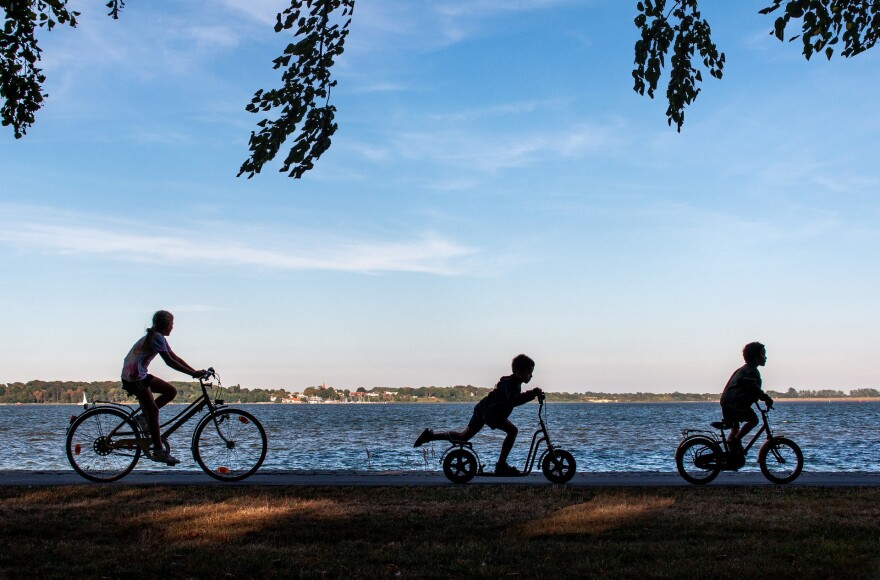Outdoor recreation boomed during the pandemic and has remained elevated.
While the industry grows, state funding for outdoor-related programs has steadily declined according to a new report from the Wisconsin Policy Forum.
Knowles Nelson Stewardship Program
One of those programs is the Knowles Nelson Stewardship Program. It was created in 1989 to buy land for conservation, purchase land easements, and fund projects like boat ramps, trails, and bridges.
The program generally uses 20-year general obligation bonds backed by the state’s full taxing authority.
Since 1990, the Stewardship program has used more than $560 million to help finance the purchase of more than 723,000 acres of land by the DNR plus additional acres by others.
2007 was the peak of spending for the program at more than $84 million.
Spending has trended mostly downward since then with 2022 at the lowest at $14.1 million dollars.

The decline in project spending over the last few years has happened even though funding levels for the program itself have remained fairly steady.
It’s in part because of oversight authority by the legislature’s joint finance committee says Jason Stein, Vice President and Research Director for the Wisconsin Policy Forum.
“One thing that the legislature does is provide oversight. That’s a very important role that lawmakers play in any state program, especially one of significant size like the stewardship program. At the same time, there has been an impact of those reviews,” said Stein.
The Wisconsin Policy Forum report found that since 2014 JFC lawmakers have reviewed and delayed 43 projects. That’s nearly a quarter of requests that go through the JFC. Only 19 of these have been approved by JFC.
One of the projects currently delayed includes the $15.5 million to buy easements for the Pelican River Forest in Oneida, Forest, and Langlade Counties.
The report points out that because of this non-profits and other groups may be less likely to use the program in the future.
“If there isn’t certainty and clarity about what you need to do to qualify, will there be an impact of some groups saying, ‘We would like to do this project. We would like to use the Knowles Nelson program to help finance this goal, but because we don’t have certainty about it, we opt not to do it,’” said Stein.
Part of Governor Evers’s proposed budget would impact this process.
He’s called for appealing a requirement that all new projects north of Highway 64 be subject to legislative review.
He also wants to remove the law that allows members of the Legislature to anonymously block a stewardship project.
The governor's budget would force lawmakers to do so publicly.
These measures are unlikely to be included in the Republican’s version of the budget.
The report also found that as Knowles Nelson spending has decreased, the focus of the kinds of projects that get approved has shifted.
“Those objections have slowed the pace of land purchases. The investment in more capital projects, boat ramps, fish hatcheries, those kinds of things have kind of supplanted some of the land purchases,” said Tyler Byrnes, a researcher for the Forum that worked on this report.
This downward trend of conservation funding from the state is not limited to the Knowles Nelson Stewardship Program.

Decrease funding for State Parks and the DNR
The report found the funding for the DNR and state parks dropped over the years despite Wisconsin being one of the top states for outdoor recreation.
Before 1995 funding for state parks was split equally between state taxes and user fees and other funds.
By the 2015-2017 budget, all state tax funding for the parks had been eliminated. In 2017, Wisconsin ranked the lowest of all states in money spent per visitor at $1.08.
"I think that's a significant finding in the report. Sometimes there were really good and pressing reasons why previous state leaders of both parties made those decisions," Stein said referring to the funding cuts for parks. "There's been a trend over time, where even in these years where we have pretty strong overall state budgets and large surpluses, this funding is still not keeping up with inflation, even in these times."
The report found that the DNR’s general purpose revenue funding over the decades has gone to funding for Medicaid, K-12 schools, state prisons, and tax cuts. Most of the cuts tended to come after recessions or other difficult economic times.
Possible funding solutions
The Wisconsin Policy Forum does share some possible ways to increase funding for conservation and environmental efforts, though it does not advocate any particular path says Stein.
“We think it’s worth a conversation right now, given the big upswell from the pandemic in the outdoors and the state’s current late budget surplus, it’s a moment we can step back and say, ‘Is this where we want to be as a state?’” said Stein.
Some of the possible funding sources include things like raising user fees, registering small watercraft, tax credits for conservation donations, or a sales tax on outdoor gear.
“It’s just an option that’s out there to add to that funding mix so that we’re not so heavily dependent on the direct user fees for wildlife management, for public land support, all the different things we talked about,” said Byrnes.
In 2021, Wisconsin outdoor recreation added $8.71 billion to the state’s economy.







